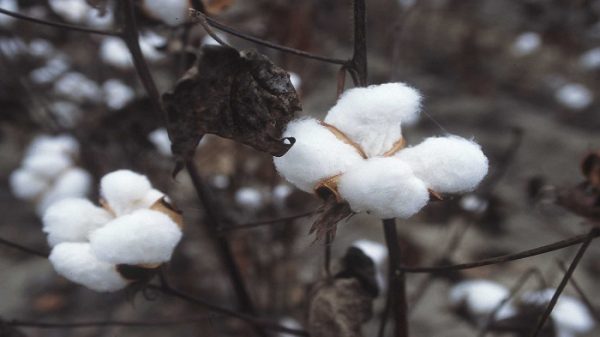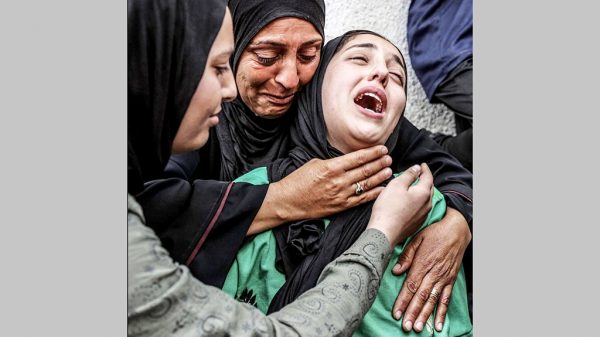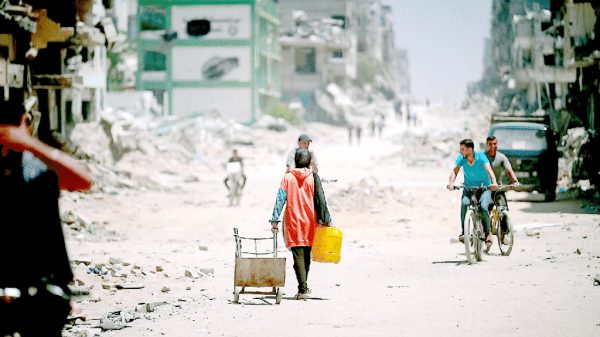Cultivation of Cotton and Development of Textile Industries

Next to food, clothing is one of the basic needs of human beings. Without food we can survive several days but without cloth it’s not possible to lead a social life for a single moment. Bangladesh is a developing country; textile industries are playing a vital role in the national economy, especially in export sector to earn foreign currencies. Bangladesh is the world’s second biggest exporter of clothing after China. The garments manufacturing sector earned $34.13 billion in the fiscal year 2018-19. The number of textile industries is quite high and is increasing day by day, contributing not only by producing apparels but also ensuring employment.
Cotton is the main raw material of textile industries. Such a large textile sector of Bangladesh highly depends upon imported cotton due to lower production of cotton in the country. Bangladesh stands at the second position as a consumer of cotton and holds the first position as a cotton importer. Generally most of the imported cotton is from African countries followed by India, Australia, USA, other CIS.
As the textile industry of Bangladesh is rising day by day, it requires a huge amount of cotton which is imported costing a great amount of foreign currency. The Bangladesh government established the Cotton Development Board in 1972 for the expansion and improvement of cotton cultivation in the country.
Though there are a lot of challenges, the textile industry is regarded as an important sector of the economy. This paper is reviewing the scenario of development of the textile sector, improvement of cotton, role of Cotton Development Board, and challenges in the textile sector.
Development of textile industries
Textiles play a vital role in the national economy. It is regarded as the lifeline of Bangladeshi economy. But it did not occupy this place overnight. The textile industry of Bengal is very old. At that time, cloths were made by hand operated weaving machines. With the growth of the Eastern civilization, demand for finer yarns led to a search and cultivation for long staple cotton fibres. “Muslin” is the heritage of textile industry of Bangladesh which is the sample of fine fibre (Fashion Apparel, 2019).
From 1947 to 1971 most of the textile industries in East Pakistan were owned by West Pakistanis. Until the liberation of Bangladesh in 1971, the textile sector was primarily part of the process of import substitution industries. After the liberation, Bangladesh adopted export-oriented industrialization (EOI) by focusing on the textile and clothing industry, particularly the RMG (Readymade Garment) sector. The apparel industry of Bangladesh started its journey in the early eighties with the first factory “Desh Garments”. Now there are almost 4,621 garments factories in Bangladesh exporting apparel products around the globe (BGMEA, 2019).
During the last fiscal year, the textile sector contributed 11.16% to the GDP. According to BGMEA (2019) in 2018-19 fiscal year, RMG sector has contributed 84.21%, or $34.13 billion to the total export receipts; knitwear products fetched $16.88 billion, which is 11.19% higher than last fiscal year and woven items earned $17.24 billion, registering an 11.79% growth.
Exporting of RMGs is increasing day by day. Fig-1 shows the rising rate to RMGs export of last ten fiscal years.
Majority of the RMGs are exported to the countries under European Union (61.91%) followed by USA (17.97%), Canada (3.45%) and other countries (16.66%). Table-1 is showing the amount of exported different RMG items (e.g. woven and knit wares) of
During the last fiscal year textile sector contributed 11.16% to the GDP of Bangladesh (BTMA, 2019). The textile sector is contributing to GDP not only by earning foreign currency but also by creating employment opportunities. Around 4.4 million people are directly involved in textile industries (Amin, 2018).
Several targets were selected for the textile industries, some of them are described below-
Earning – 50 billion USD within 2021; Targeting new areas of export e.g. Africa, Latin America, Caribbean Islands etc; Employees’ number in textile sector will be raised to 4.9 million by 2050; Contribution to GDP will increase up to 7.2% by 2021 and 12.12% by 2050; Textile industry will enter the Green Policy covering lower GHG emission and lower water use by 2021.
Development of cotton production and quality improvement
Cotton is the main raw material of textile industries. As the amount of locally produce cotton is very low with respect to its demand in the textile industries, it is very important to import cotton. For importing such huge amount cotton, every year a huge amount foreign currency is needed to invest. Around 8.1 million bales of cotton were imported in the 2018-19 FY which cost around 47 billion USD. In the fiscal year 2018-19 most of the cotton was imported from east and West Africa followed by India, CIS, USA, Australia and rest of the world.
As local production is unable to meet its requirement, such high amount of cotton import is necessary. But government of Bangladesh is taking necessary steps to improve the cotton production. If the cotton production can be increased, it will be possible to save our foreign currency. To develop cotton production in Bangladesh, the Father of the Nation Bangabandhu Sheikh Mujibur Rahman established “Cotton Development Board” in 1972.
Cotton production is noticeably increasing in the country during the last ten fiscal years. In 2009-10, the cotton lint production was 70,000 bales; now in the 2018-19 the production reached 171,470 bales. Improvement in the cotton production during the last decades is showing in the Fig-3.
Quality is a major issue for cotton. Locally produced cotton was not up to the mark with respect to quality. But in the recent past the quality of cotton fibre improved through different research activities. Previously, locally produced cotton had high fibre length and strength but the microniare value was not good. Nowadays, all the parameters of good quality of cotton fibre have improved in locally produced cotton and it is better than others cotton.
Role of Cotton Development Board
From the establishment, the Cotton Development Board is working for the extension of cotton cultivation in Bangladesh. In 1991, cotton research wing was opened in Bangladesh Agriculture Research Institute (BARI). Now Cotton Development Board consists of two wings e.g. extension wing and research wing.
The cotton extension wing is providing service by CDB (HQ), four Regional Offices, Thirteen Zonal Offices, 195 Unit offices. On the other hand, the cotton research wing is working through 5 (five) research centres. CDB has showed promising successes from the establishment. Both extension and research wings are working simultaneously for improving cotton cultivation and quality improvement of fibre. Some of the successes of CDB are: Cotton lint production increased up to 150% in last ten years; farmers are becoming interested to cultivate cotton; 20 varieties (19 HYVs and 1 Hybrid variety); 29 cotton cultivation technologies.
Challenges in textile sector in Bangladesh
From the very beginning, the textile industry is facing lots of challenges. Many of those challenges have been overcome. But still there are some challenges for textile sector. Some of them are – Climatic impact, lack to proper monitoring, demand supply gap of raw cotton, subsidy removal from textile sector – GSP cancelled by USA and lack of skilled man power
Challenges in cotton production
Though the production of cotton has increased at a noticeable rate, still there is a huge shortage compared to its demand. Cotton production in Bangladesh is frequently facing some problems such as – long duration, competitive land, competitive with other high value crops, climate change, especially erratic rainfall, price volatility and insect pest.
To overcome the above challenges Bangladesh government has taken necessary steps such as strengthening the Cotton Development Board, increasing infrastructure development, creating an environment-friendly textile sector, ensuring wages in time for garments employees etc. Besides this, CDB will need expansion of cotton growing areas, reorganizing CDB, provide price subsidy to cotton farmers, provide government loan as a special crops.
Cotton is very important cash crop of Bangladesh after jute. Bangladesh imports a huge amount of raw cotton for textile industry to fulfil the local and international demands. Textile sector is the driving factor for development of the economy of Bangladesh. The number of textile industries is quite large and is increasing day by day, contributing not only by producing apparels but also ensuring employment. Climatic factors and lack of proper monitoring are the main challenges in development of textile sector. For overcoming the challenges in textile sector, Bangladesh government already took some important initiatives such as: strengthening Cotton Development Board, increase infrastructure development of CDB, reorganizing CDB, provide price subsidy to cotton farmers, and provide government loan as a special crops.
The writer is a Deputy Director,
Cotton Development Board,
Email: mdtasdiqur@yahoo.com




























Leave a Reply